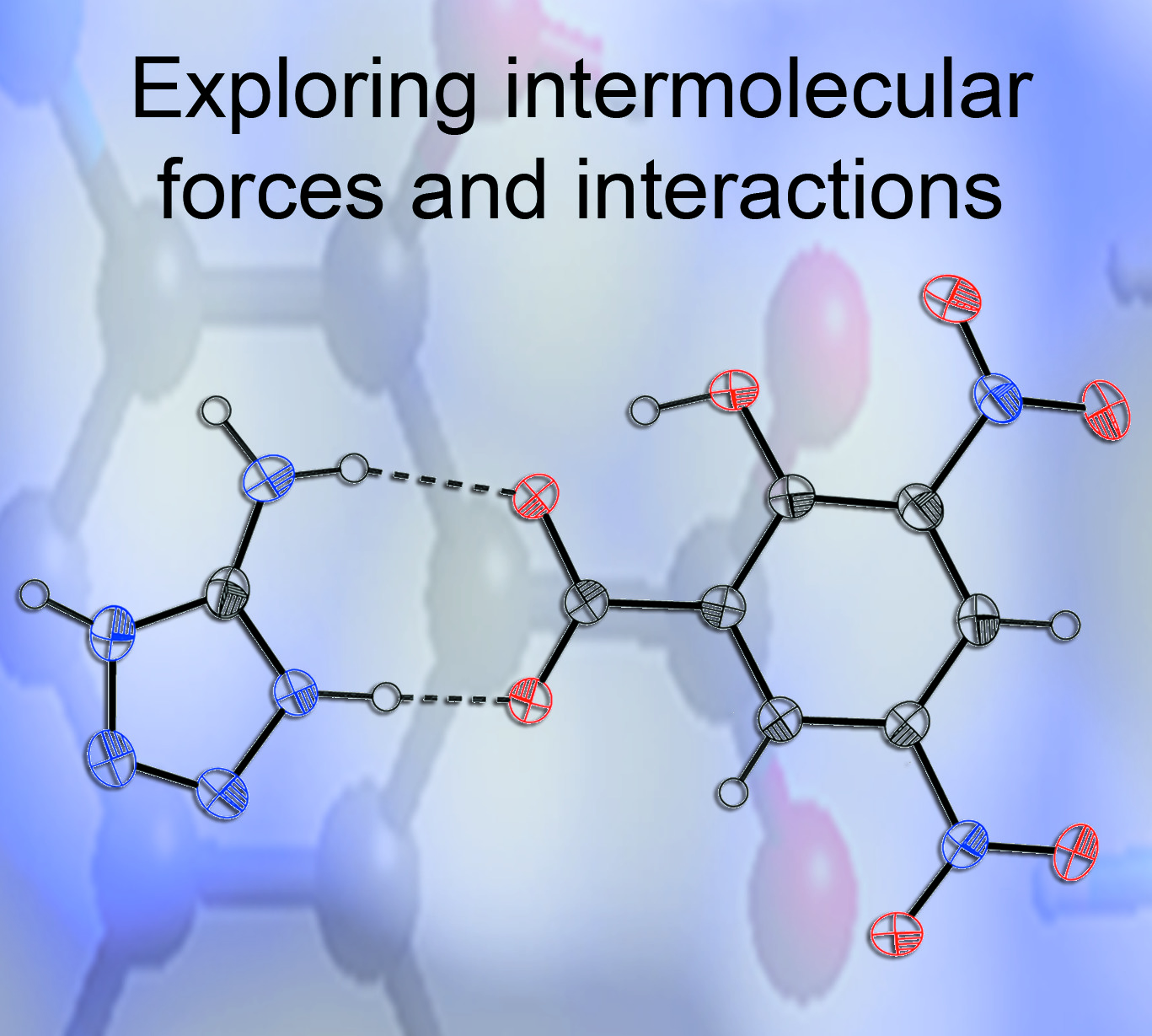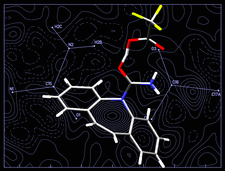special issues
Acta Crystallographica Section C publishes focused special sections and issues devoted to all areas of structural chemistry.
The journal has published exciting special issues on topics as diverse as
The journal also publishes curated collections from its archive, or virtual issues. The third virtual issue featured coordination polymers, with an introduction by Len Barbour.
If you would like to see a special issue on a particular topic enabled by the determination, calculation or analysis of small-molecule crystal and molecular structures in the chemical sciences, please send your suggestion to the Managing Editor (Sean Conway; sc@iucr.org).
Forthcoming special issues
Acta Crystallographica Section C is planning special issues on the topics listed below with the aim of expanding the scope and authorship of the journal. Authors wishing to submit articles for these issues should first read the Notes for authors and the online submission instructions. Further information on the special issue can be obtained by contacting either the Guest Editor(s) or the Managing Editor (Sean Conway; sc@iucr.org).
Advances in Electron Diffraction for Structural Characterization (to be published in 2024)
Guest editors: Glenn Yap (University of Delaware, USA; e-mail: gpyap@udel.edu), Eric Reinheimer (Rigaku Americas, USA; e-mail: eric.reinheimer@gmail.com, Joe Ferrara (Rigaku Americas, USA; e-mail: joseph.ferrara@rigaku.com), Laura Samperisi (Eldico Scientific AG, Switzerland; e-mail: samperisi@eldico.ch) and Gunther Steinfeld (Eldico Scientific AG, Switzerland; e-mail: steinfeld@eldico.ch).
The use of electron diffraction (ED) as an alternative to traditional X-ray diffraction has gained traction in the last several years especially in the advent of electron beam diffractometers being developed. This special issue will highlight recent advances in the technique and attempt to lay groundwork in establishing crystallographically sound standards and best practices for data collection and structural interpretation.

Crystallography in Latin America: a vibrant community (to be published in 2024)
Guest editors: Maria Rosales-Hoz (Cinvestav, Mexico; e-mail: mrosales@cinvestav.mx) and Renata Diniz (Universidade Federal de Minas Gerais, Brazil; e-mail: dinizr@qui.ufmg.br).
The growth of the number of articles published by Latin American researchers has been important in recent years. Part of this growth is represented by Crystallography papers. This special issue of Acta Crystallographica Section C will help to give visibility to the work carried out by the crystallographic community in our countries and will coincide with the Sixth Latin American Crystallographic Association (LACA) Meeting.

Best practice in crystallography (an occasional series for 2024)
Guest editor: Alan Kennedy (University of Strathclyde, Scotland; e-mail: a.r.kennedy@strath.ac.uk).
The journal is launching an occasional series of invited lead articles on a general `how to do or why to do' theme. The collection will look at current best practices and topical perspectives over a range of subjects aimed at readers with an interest in structural chemistry. The series will begin in early 2024 and some early subjects will be crystal structures for organic electronics, best practice when collecting powder diffraction data, growing high-quality crystals and photocrystallography.
If you have an idea for an article that would be interesting and useful to readers of the journal and the crystallographic community, contact Alan Kennedy (Section Editor; a.r.kennedy@strath.ac.uk) or Sean Conway (Managing Editor; sc@iucr.org).

Exploring intermolecular forces and interactions (to be published in 2024)
Guest editors: Joseph Reibenspies (Texas A&M University, USA; e-mail: j-reibenspies@tamu.edu) and Peter Corfield (Fordham University, USA; e-mail: pcorfield@fordham.edu).
A series of articles from a session at the 2023 ACA Annual Meeting will explore how crystal structures can be used to understand intermolecular forces and interactions, focusing on tools (such as CrystalExplorer) or specific case studies.

Previously published special issues
Acta Crystallographica Section C has published four special issues on the topics listed below with the aim of expanding the scope and authorship of the journal. It is hoped that the special issues will demonstrate to the scientific community the style of papers that the journal is now inviting. Acta Crystallographica Section C: Structural Chemistry is the journal of choice for publishing any interesting research enabled by the determination, calculation or analysis of small-molecule crystal and molecular structures in the chemical sciences.
Scorpionates (September 2013)
Guest editor: Glenn Yap (University of Delaware, USA; e-mail: gpyap@udel.edu)

Pharmaceuticals, drug discovery and natural products (November 2013)
Guest editor: Chris Frampton (Pharmorphix Solid State Services, Cambridge, UK; e-mail: chris.frampton@sialcom)

Interplay of crystallography, spectroscopy and theoretical methods for solving chemical problems (December 2013)
Guest editors: Larry Falvello (Universidad de Zaragoza, Spain; e-mail: falvello@unizar.es) and Alberto Albinati (Universita degli Studi di Milano, Italy; e-mail: alberto.albinati@unimi.it)

Computational materials discovery (February 2014)
Guest editor: Artem Oganov (State University of New York at Stony Brook, USA; e-mail: artem.oganov@sunysb.edu)

Scorpionates: a golden anniversary (November 2016)
Guest editors: Glenn Yap (University of Delaware, USA; e-mail: gpyap@udel.edu) and Kiyoshi Fujisawa (Ibaraki University, Bunkyo, Mito, Japan; e-mail: kiyoshi.fujisawa.sci@vc.ibaraki.ac.jp)

NMR crystallography (March 2017)
Guest editors: David Bryce (University of Ottawa, Canada; e-mail: dbryce@uottawa.ca) and Francis Taulelle (Universite de Versailles Saint Quentin en Yvelines, France; francis.taulelle@uvsq.fr)

Polyoxometalates (POMs) (November 2018)
Guest editors: José Ramón Galán-Mascarós (Institute of Chemical Research of Catalonia (ICIQ), Spain; e-mail: jrgalan@iciq.es) and Ulrich Kortz (Jacobs University, Germany; e-mail: u.kortz@jacobs-university.de)

Halogen, chalcogen, pnictogen and tetrel bonds: structural chemistry and beyond (May 2023)
Guest editors: Lee Brammer (University of Sheffield, UK; e-mail: lee.brammer@sheffield.ac.uk), Tom Roseveare (University of Sheffield, UK; e-mail: tom.roseveare@sheffield.ac.uk) and Anssi Peuronen (University of Sheffield, UK, and University of Turku, Finland; e-mail: anssi.peuronen@sheffield.ac.uk)


 journal menu
journal menu



